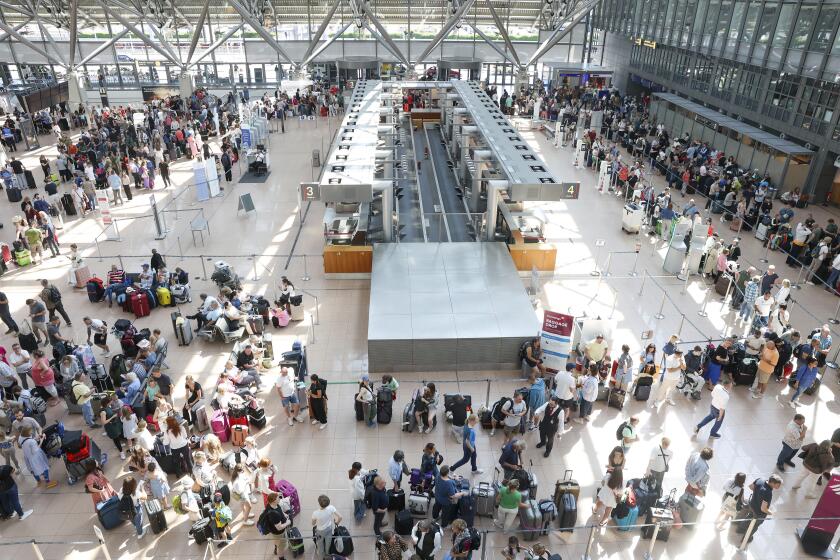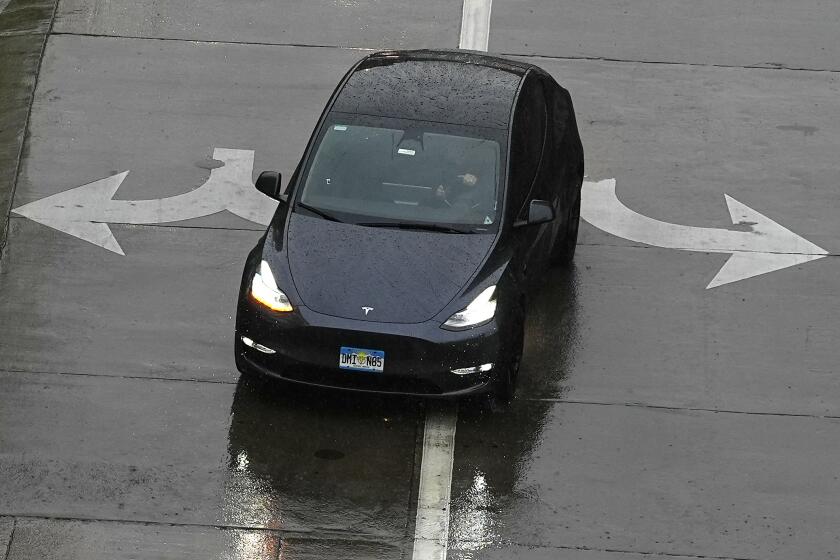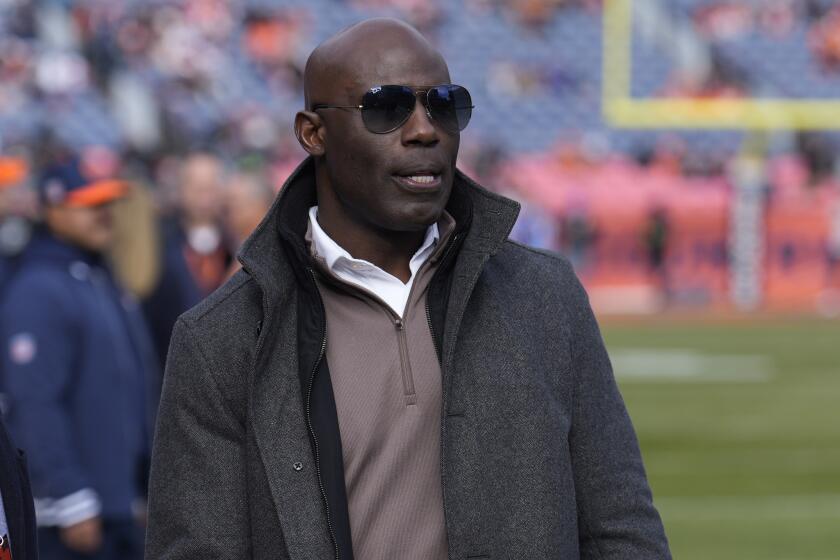Greyhound Reductions Shrink Transportation Options
Come today, the bus won’t stop here anymore.
Nor will it stop at 41 other towns and small cities, mostly in the Midwest, among the more than 850 where bus stops have been closed by Greyhound Lines Inc. in the last 15 months.
Almost lost in the national transportation upheaval -- historically high gasoline prices, four major airlines in bankruptcy, the future of Amtrak rail service again in doubt and a growing debate about transportation alternatives -- is the radical restructuring of the nation’s dominant long-haul bus carrier.
By the time Greyhound completes redefining its bus network, probably by the beginning of the year, the elimination of what is expected to be more than 1,000 bus stops will substantially reduce a public transportation alternative and reaffirm the American reality that the car is king.
In many isolated areas of the country, if you are elderly or disabled or if you don’t have a car, you could be in trouble, economists and transportation experts say.
“The United States is a very difficult place not to have a car,” said Stephan Weiler, an economist at the Center for the Study of Rural America, a division of the Federal Reserve Bank in Kansas City, Mo.
“This is not a liberal or conservative argument,” Weiler said. “This is the economics of geography, and there is a presumption that someone out there will have a car for you. For those who don’t have a car, they’re going to have to quickly find out who does.”
The presumption that someone will be there to help is being put to the test in ways that are not always apparent to most car-owning Americans.
In Howell, a rapidly growing and increasingly upscale city about 50 miles northwest of Detroit, Joyce Steward represents the current problem for Greyhound and the challenge once the carrier leaves town.
Steward, who does not own a car, last week sat with family members on a green, wooden park bench, waiting for the 10:50 a.m. bus that would, after 13 or 14 hours, carry her home to London, Ky. Steward is one of an average of fewer than three people who have used Greyhound every day in Howell, where the carrier made four stops a day.
For Greyhound, which began its service in 1914 transporting miners in northern Minnesota, serving small isolated communities is an unworkable business model.
Greyhound buses carried about 21 million people in 2004, according to company figures, but passenger traffic continues to fall and small stops are unprofitable.
Now the company is concentrating on trips of 450 miles or less, with fewer stops along the way. The last step in cutbacks is about to begin, in the Northeast.
“As the next step in improving our passenger network and service to the majority of our customers,” reads Greyhound’s letterhead memo taped to the front door of the Howell bus stop, “your location has been selected for elimination.”
Anna Folmnsbee, a spokeswoman for Dallas-based Greyhound, said it was “not ever easy to look people in the eye and say, ‘I’m sorry, we’re no longer serving this location,’ but we’ve got to do what is best.”
The bus service gap is being filled in some states, such as Wyoming, by regional and private bus lines. But there is no logical or quickly available transportation alternative for many isolated communities because the demand comes from a relatively thin slice of society -- nondrivers.
“We have to recognize that a lot of the private services provide a tremendous public service,” said Anthony Pagano, a transportation specialist and professor of management at the University of Illinois at Chicago.
“It’s very, very difficult to make money in these low-density markets.”
The 42 sites where service ends today are in Michigan, Illinois, Indiana, Ohio, Pennsylvania, Maryland and West Virginia.
More to Read
Sign up for Essential California
The most important California stories and recommendations in your inbox every morning.
You may occasionally receive promotional content from the Los Angeles Times.






